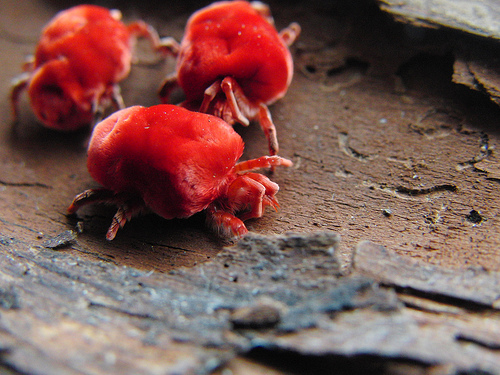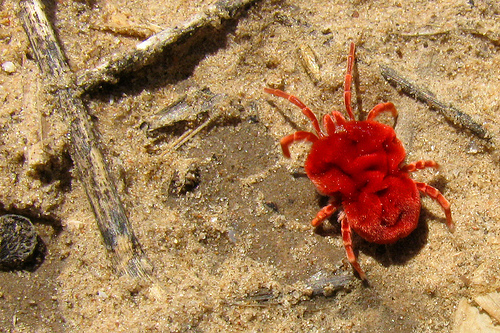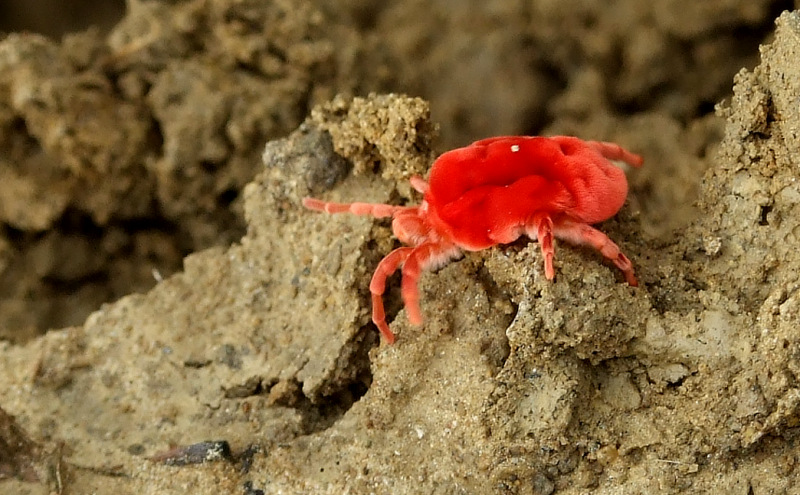Trombidium grandissimum "Giant Red Velvet Mite"
Classification
Domain: Eukarya- Eukarya consists of organisms whose cells
contain
a true nucleus and membrane bound organelles.
Kingdom: Animalia- The animal kingdom is composed of
multi-cellular heterotrophs that do not have a cell wall-allowing for complex
movements.
Phylum: Arthropoda- Organisms in this phylum are distinguished
by their segmented bodies and jointed exoskeleton, such as insects and
spiders.
Class: Arachnida- Spiders, ticks and mites belong in this class.
Characteristics are eight legs as adults, no antennae or wings, and a
combined head and thorax.
Subclass: Acari- This is the division mites and
ticks fall
under. Organisms under this category are typically parasitic at
some stage in their life-cycle. The Giant Red Velvet Mite is
parasitic in its larvae stage.
Superorder: Acariformes- A lineage for the three superorders of
mites, characteristics include body segments added between molts, legs
fo rmed within the body, and specialized setae that are
sensitive to movement.
rmed within the body, and specialized setae that are
sensitive to movement.
Order: Actinedida- Characterized with specialized sense
structures on the back (the velvety appearance aids as sensors), difficulty in detecting
different sexes, and can live in almost any kind of environment.
Suborder: Parasitengona- A characteristic shared by all members
of the suborder Parasitengona is the complex life-cycle that includes
parasitic larva, two inactive stages, a predatory pre-adult stage and
then a predatory adult stage. Click
here for more details of T. grandmissimum's life cycle.

Superfamily: Trombidioidea- Features include: a soft body, the
entire body is covered in short, hair-like structures.
Family: Trombidiidae- This is the family that includes all the
Red Velvet Mites.
Below is cladistic phylogenetic tree based on the molecular structure of
Acariformes modified from Molecular Phylogenetics and Evolution 56:222-241.
Here is another phylogenetic tree showing where the family of T. grandissimum, Trombidiidae, fits in with related organisms based on molecular structure. The tree was modified from A Cladistic Analysis of Trombididae (Acari: Parasitengona): Congruence of Larval and Adult Character Sets 73:96-103.

Back to home.